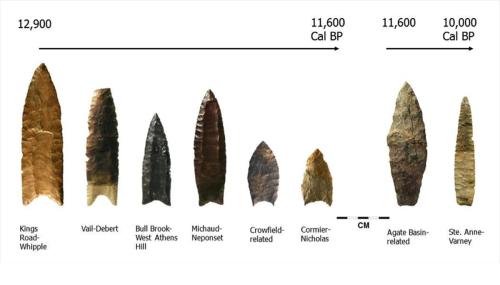The New York Paleoindian Database Project (NYPID)
As part of ongoing research on Native American adaptations during the Late Pleistocene and Early Holocene in New York, the NYSM has renewed its commitment to the statewide Paleoindian point survey. To all members of the NY State Archaeological Association and others interested in New York prehistory, please help us systematically record data on Paleoindian fluted and lanceolate projectile points for the NYPID Project.

Chronological sequence of Paleoindian points for eastern New York and the New England-Maritimes, 13,000-10,000 years before present.
To help contribute to the NYPID Project, review the sections II and III below.






